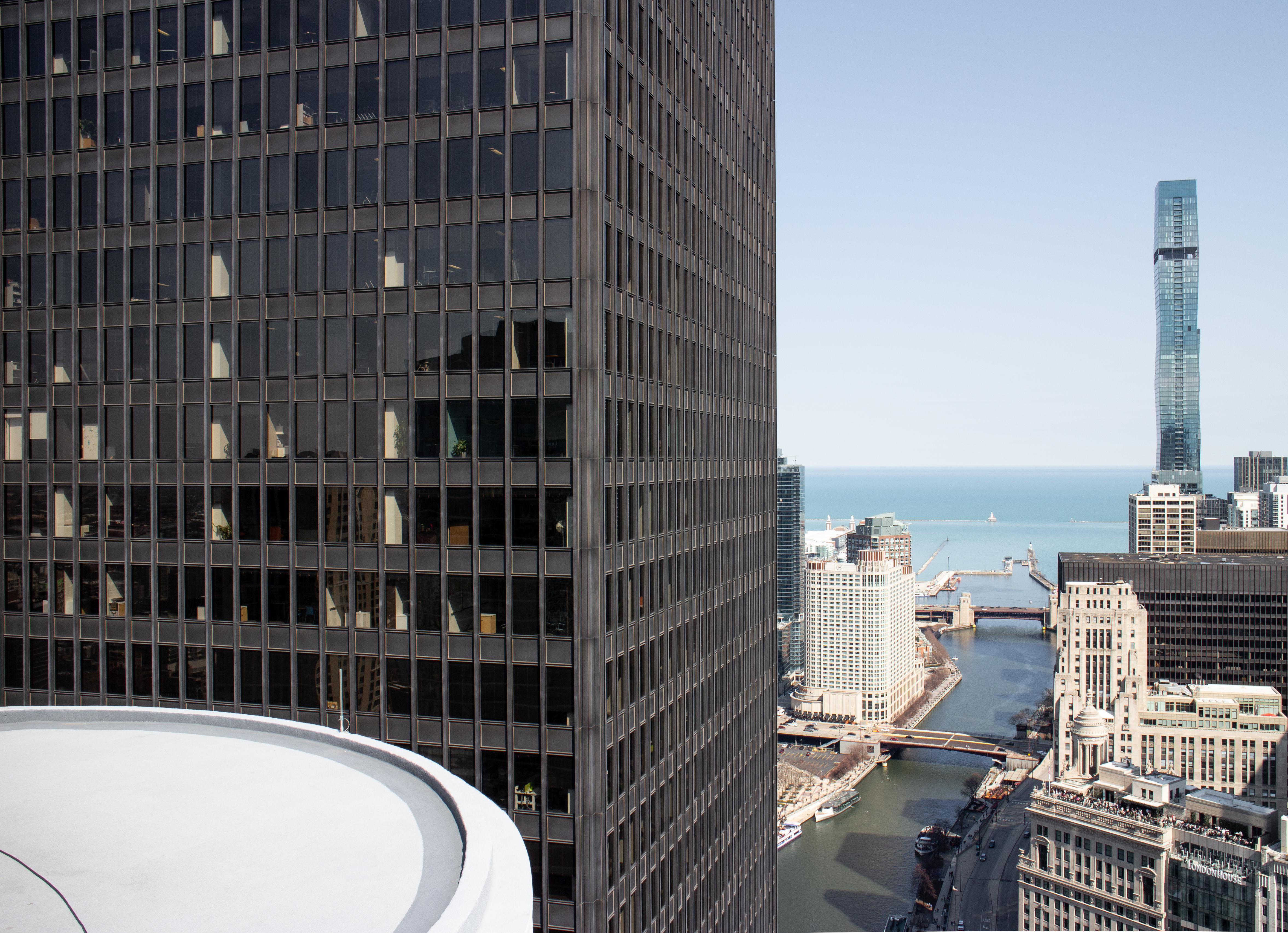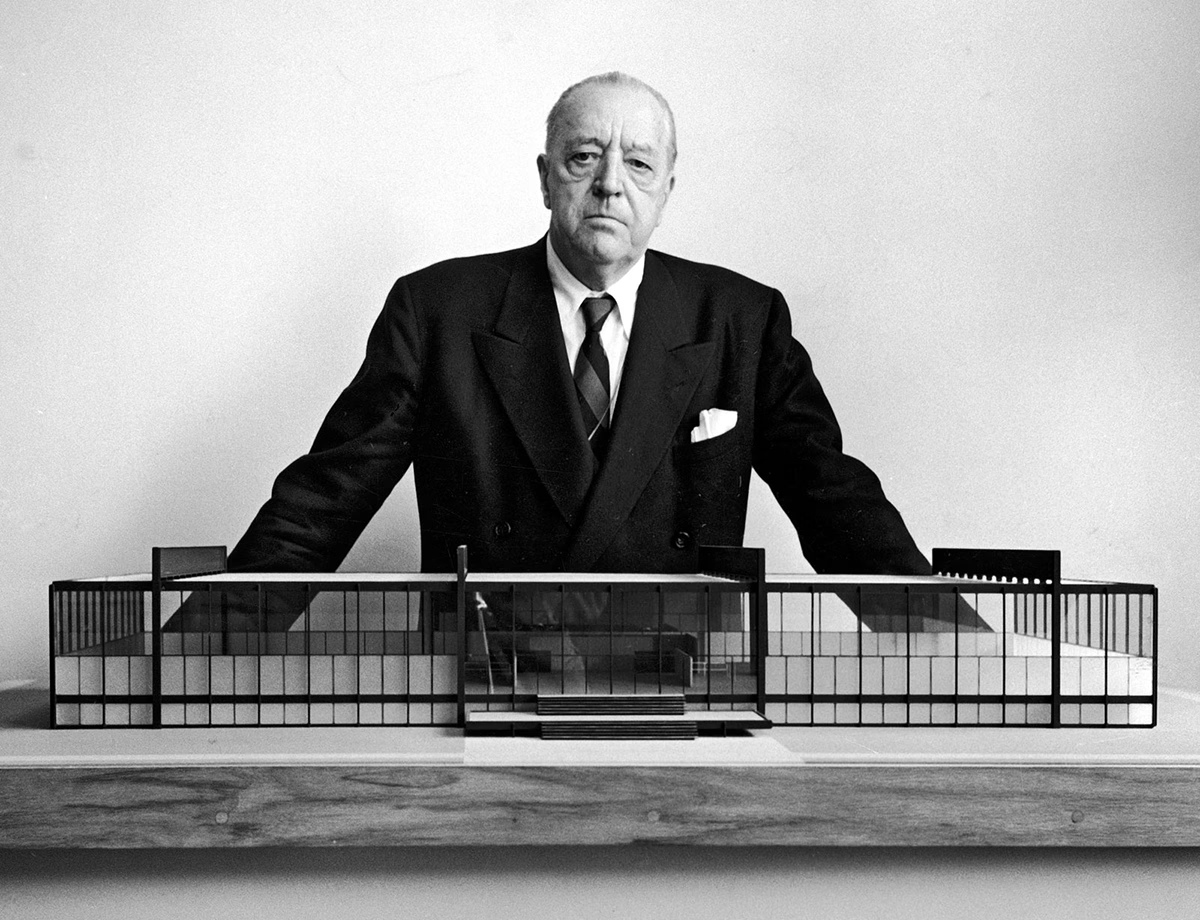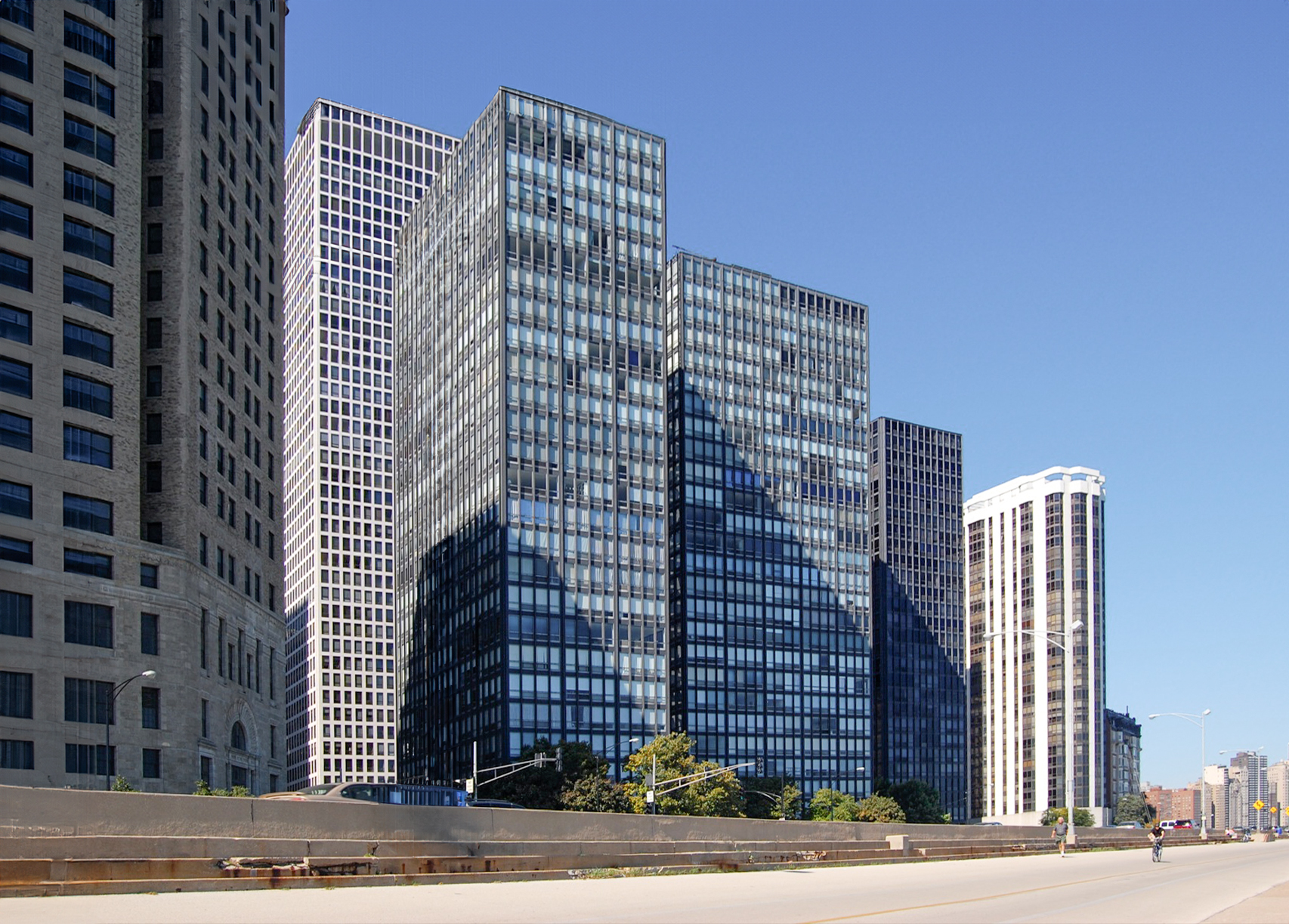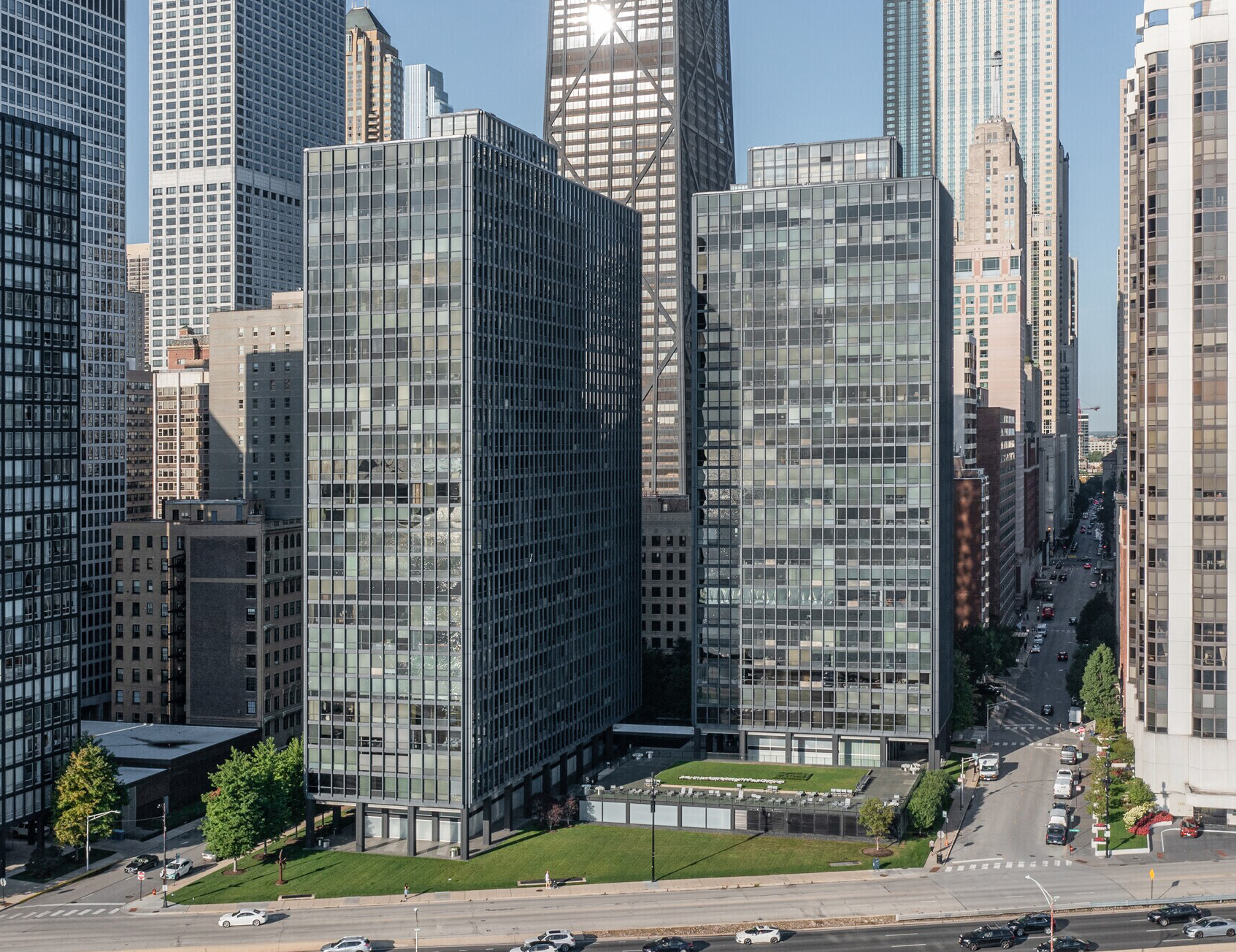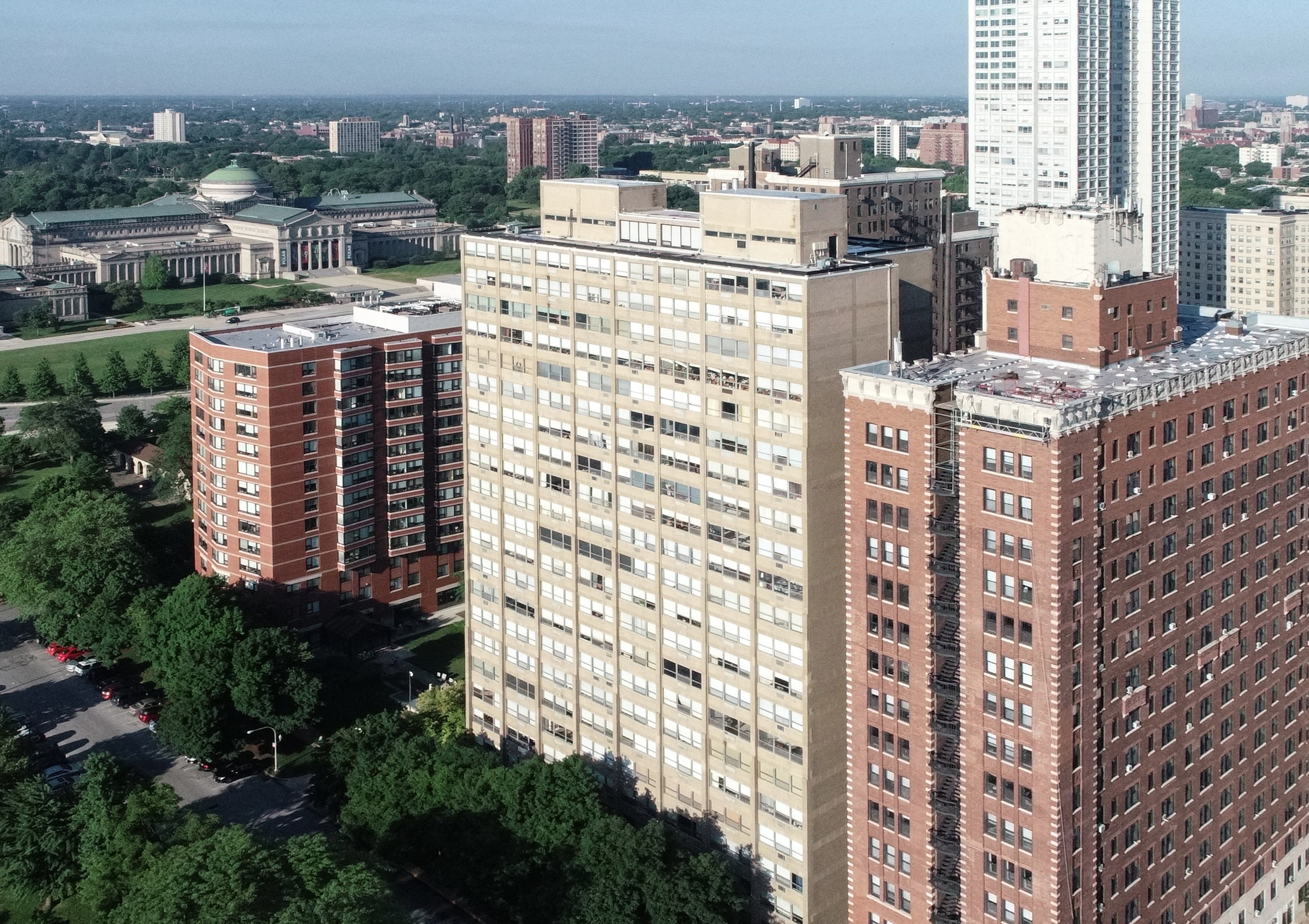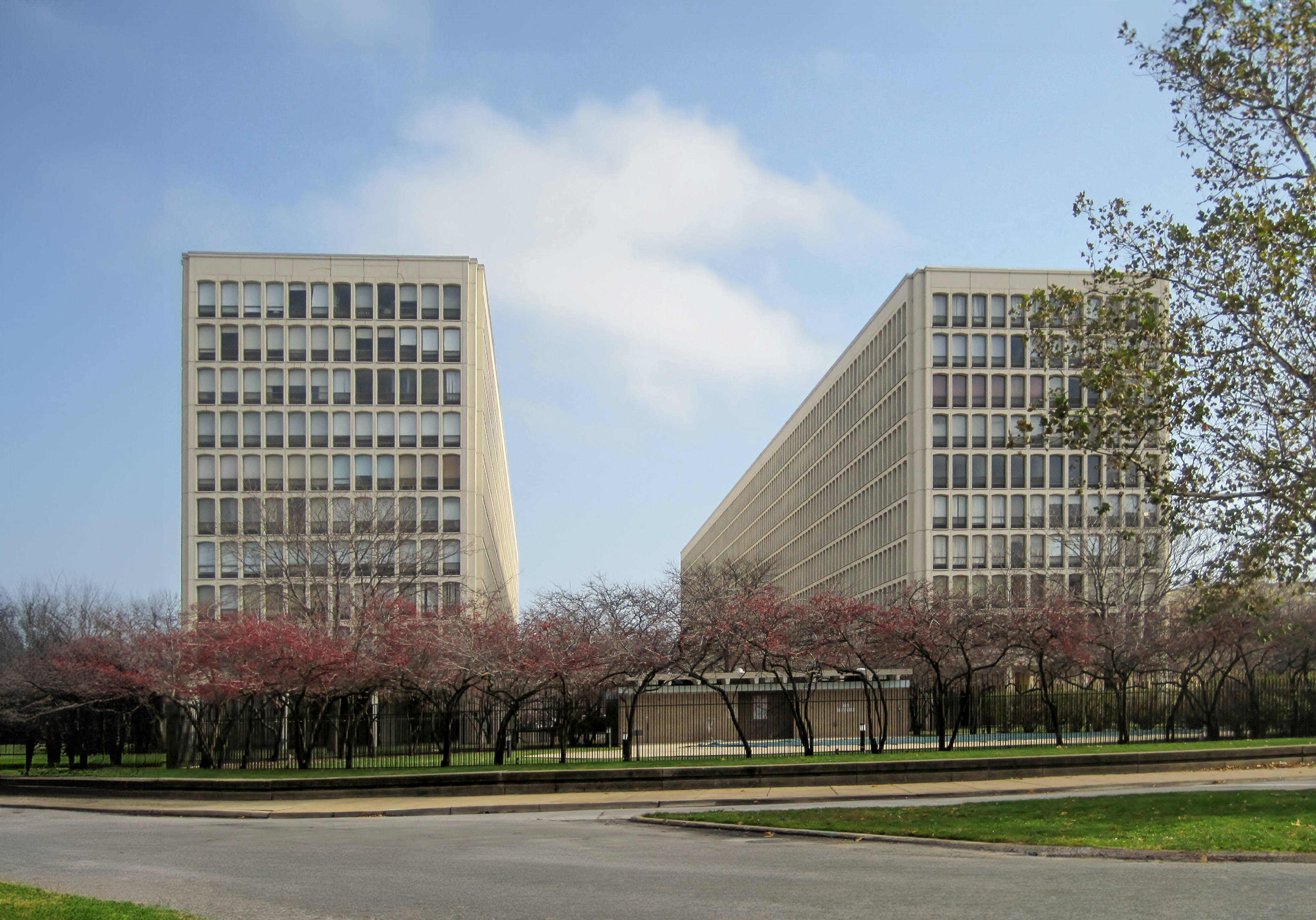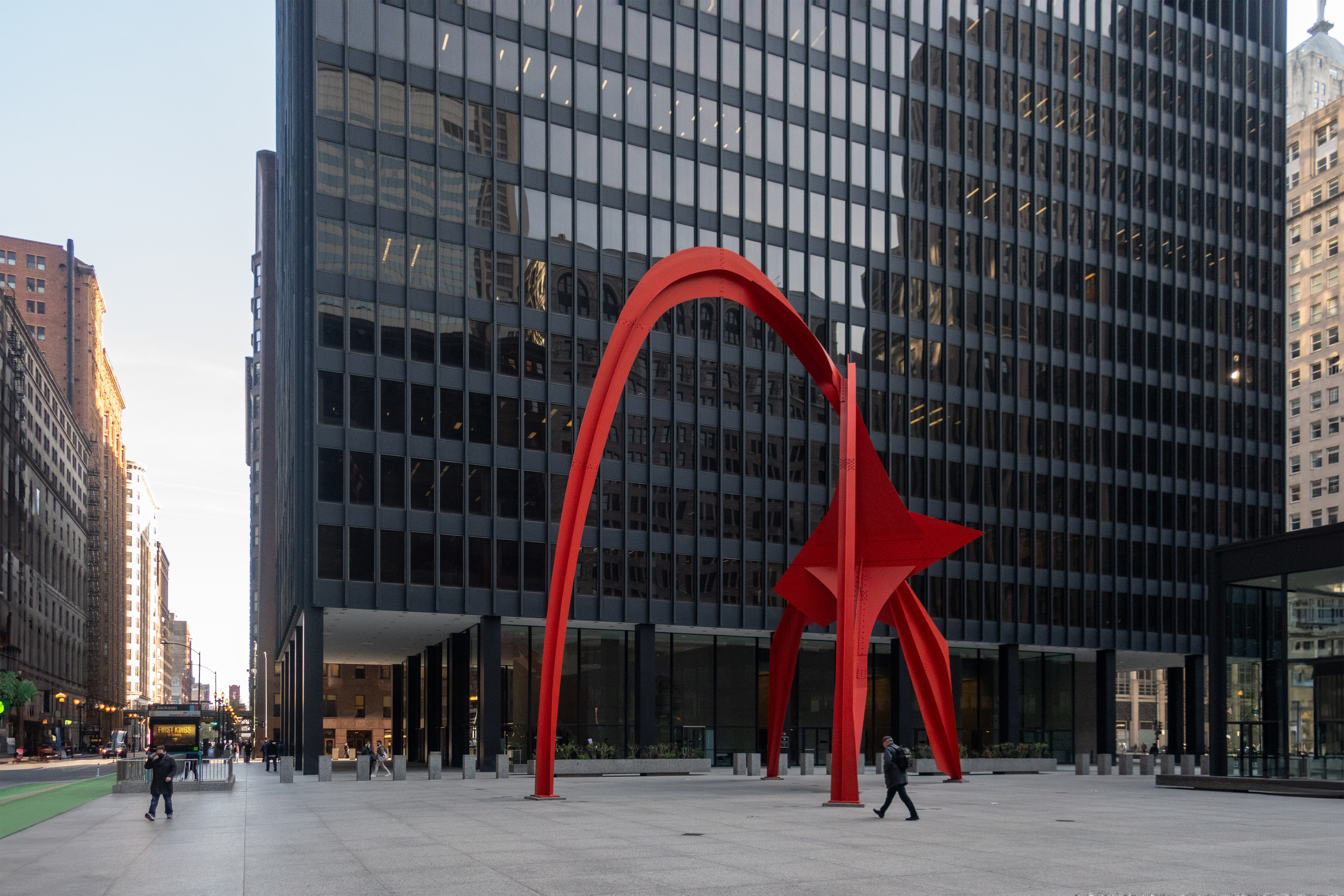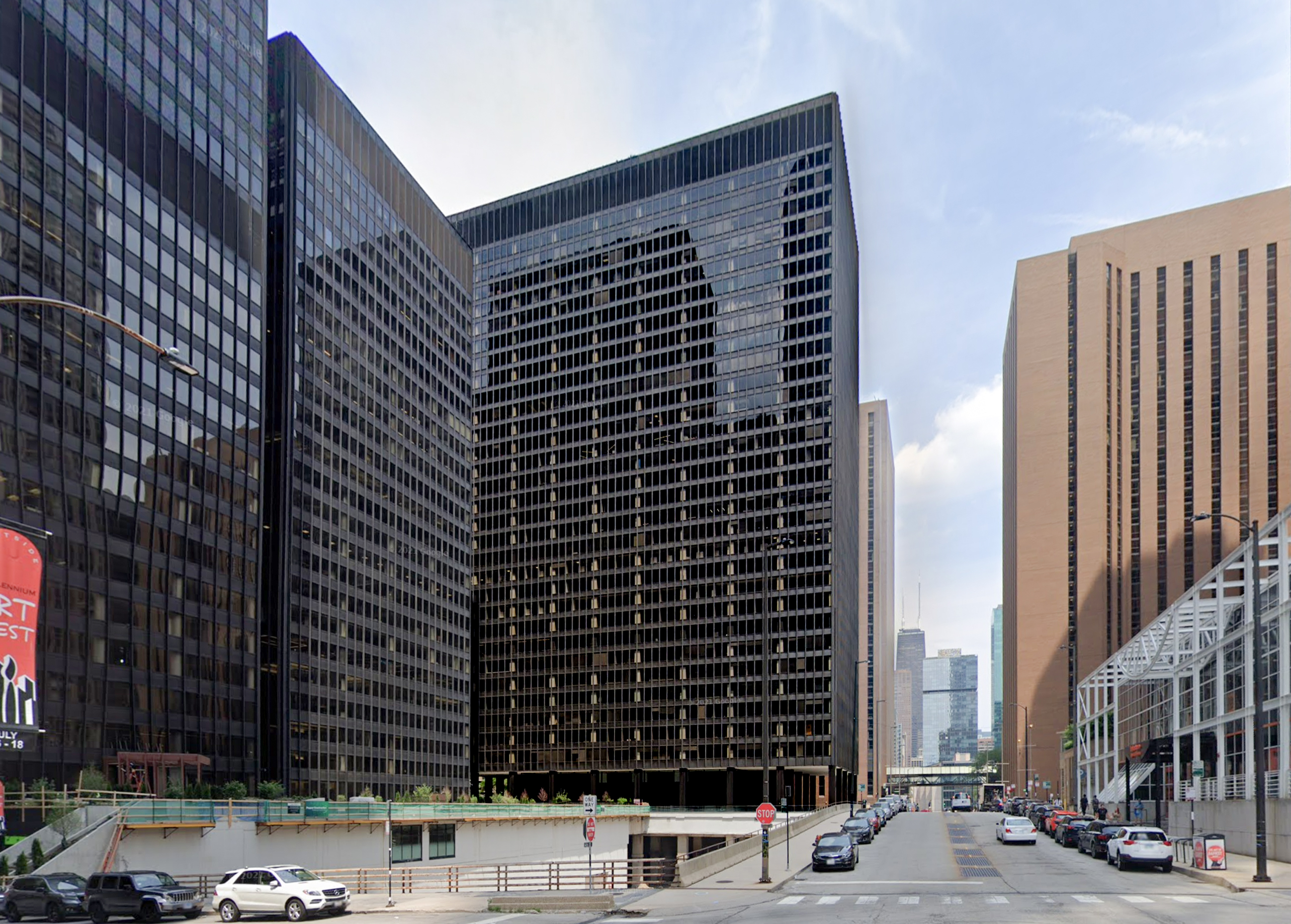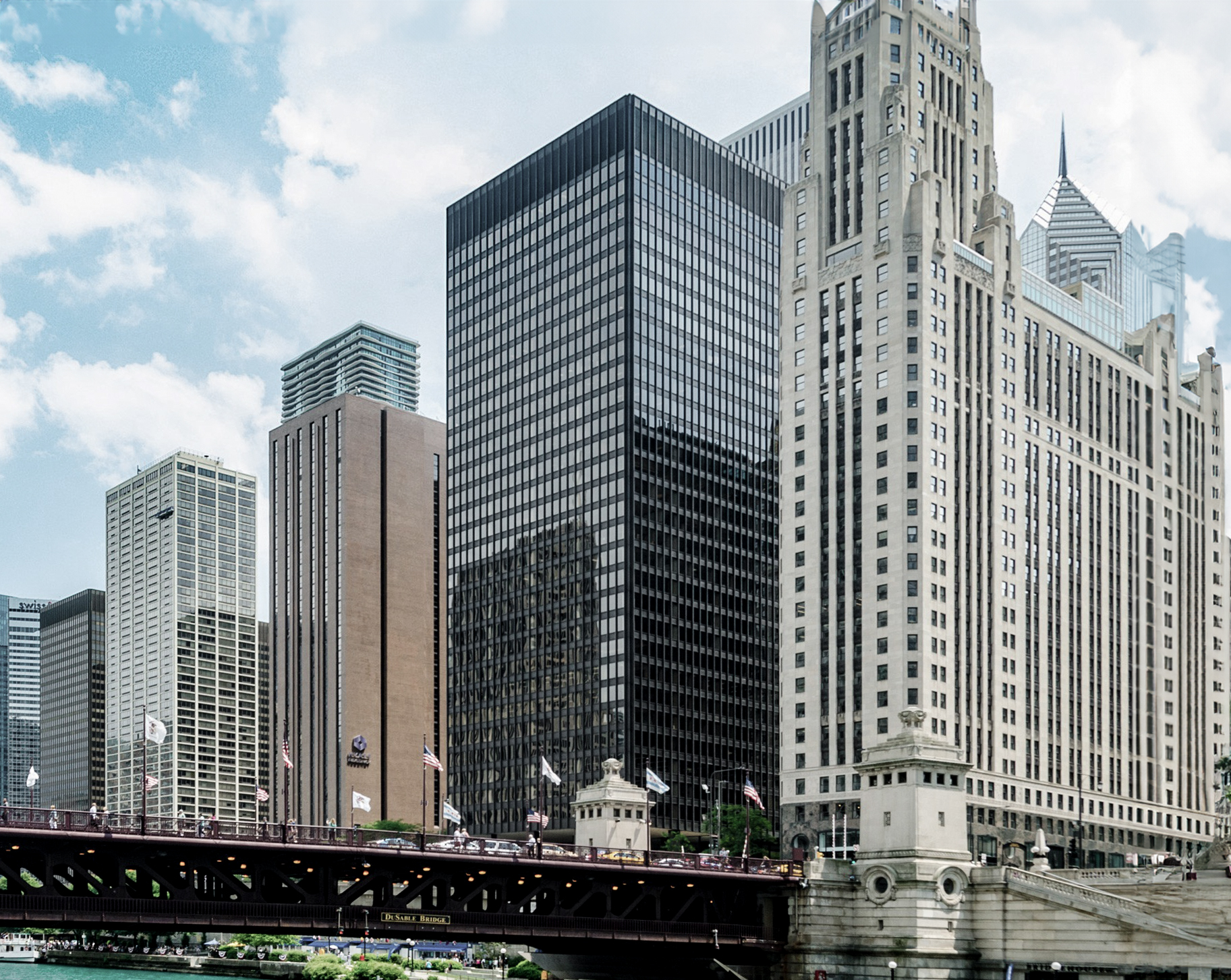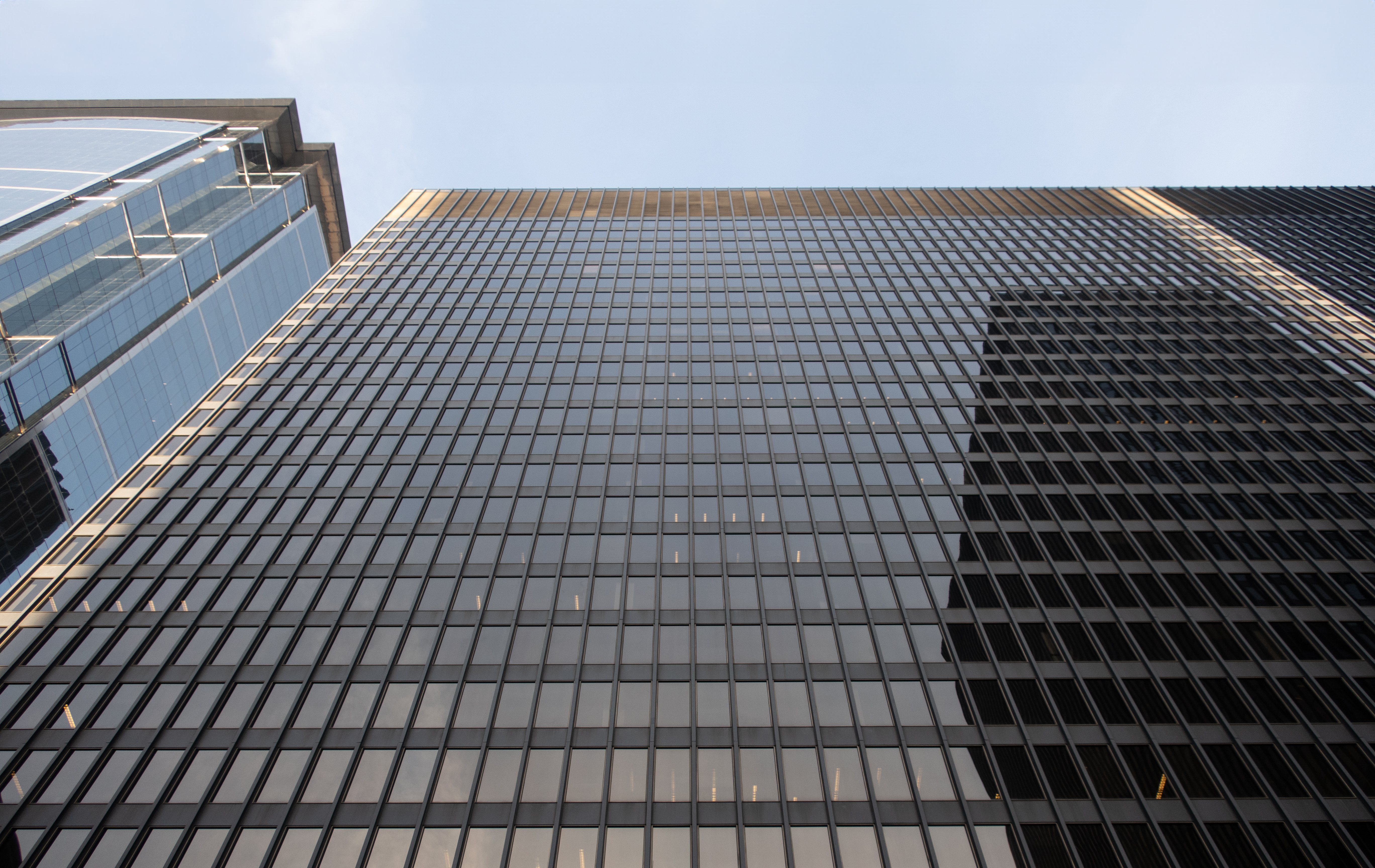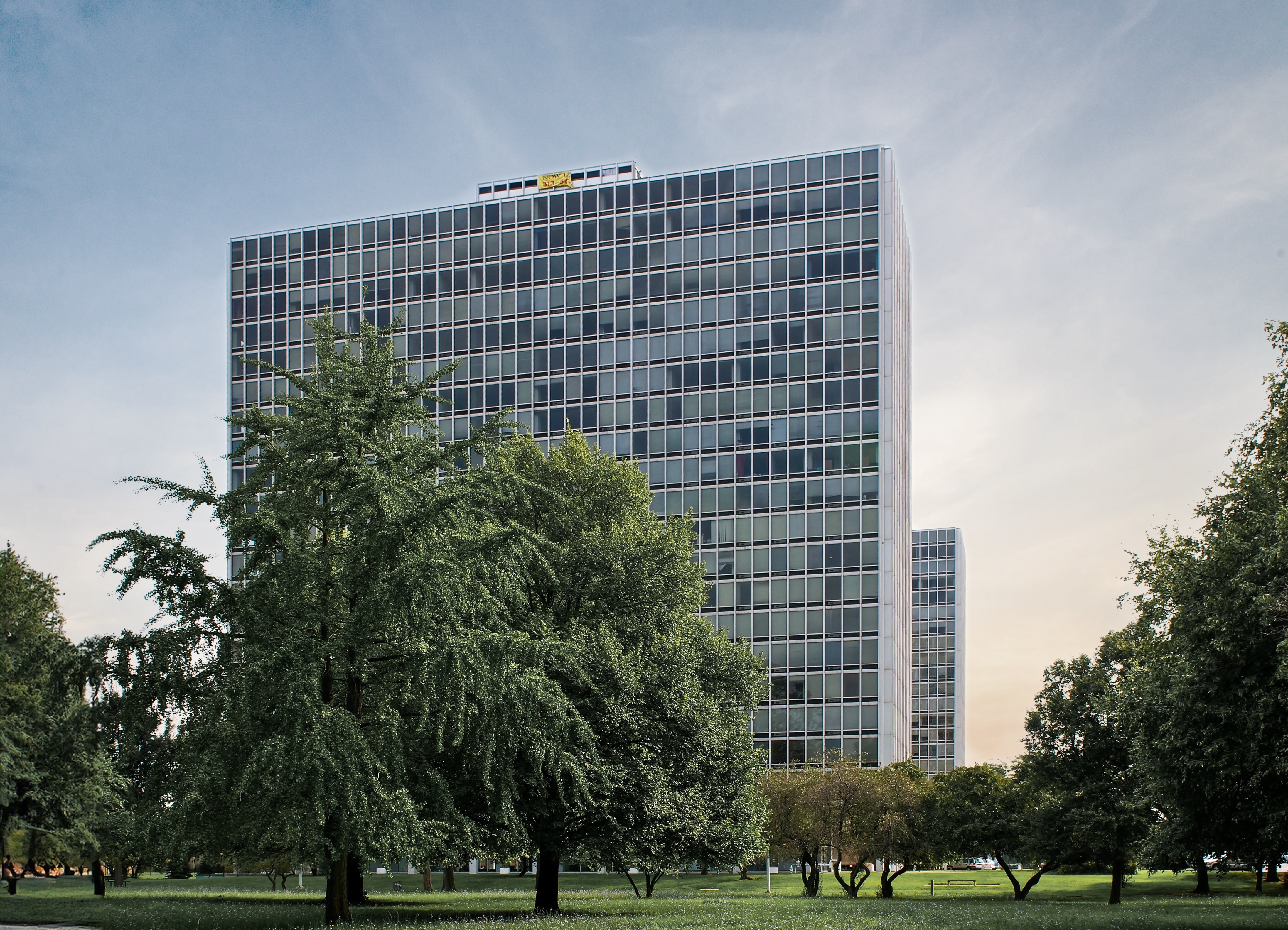The 330 N. Wabash Avenue Building is an International Style skyscraper designed between 1968 and 1969 by Mies van der Rohe, and built between 1970 and 1972 in Chicago, IL.
330 N. Wabash Avenue Building is not the only name you might know this building by though. It is common for companies to want to attach their names to iconic buildings when they move in, or for the general public to come up with nicknames, and this one is no exception. The building has changed names several times over the years, and is also known as:
- One IBM Plaza.
- IBM Building.
- AMA Plaza from 2013 until this day.
Its precise street address is 330 North Wabash, Chicago, IL. You can also find it on the map here.
The 330 N. Wabash Avenue Building is a structure of significant importance both for the city of Chicago and the United States as a nation. The building embodies the distinctive characteristic features of the time in which it was built and the International Style style. Because of that, the 330 N. Wabash Avenue Building was officially declared as a national landmark on November 1st 2007, and was included in the National Register of Historic Places on March 11th 2010.
With its prismatic mass, steel structure, elegant curtain wall, glass lobby, and plaza flowing from the interior, the IBM building exhibits all the characteristics of a Miesian skyscraper.
Mies died in August 1969, before the construction of the tower began..
At the time of its completion in 1972 the 330 N. Wabash Avenue Building incorporated solutions that were quite advanced at the time, these included a state-of-the-art electrical system for both heating and cooling, which was operated by an IBM computer of course.
That was not the only innovation when it came to temperature control though. To harness the excess heat in the building generated by its occupants, lights, and computers, a heat recovery system was installed. This system collects the excess heat and redirects the surplus for other purposes.
Last but not least, the elevators were the first in the city to include the "fireman's recall," which, in case of any sign of fire in the building, directed them directly to the ground floor.
